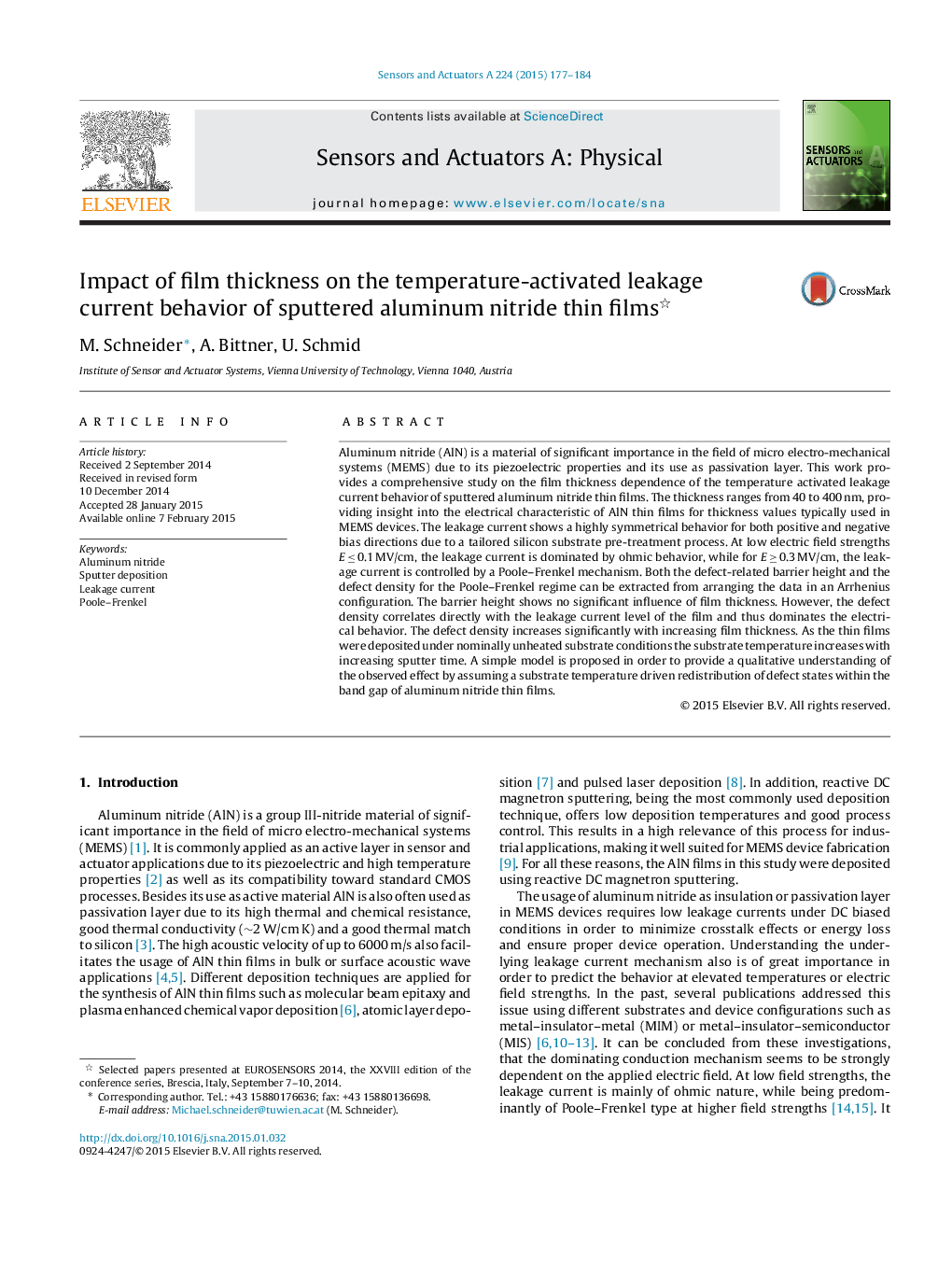| کد مقاله | کد نشریه | سال انتشار | مقاله انگلیسی | نسخه تمام متن |
|---|---|---|---|---|
| 736899 | 1461876 | 2015 | 8 صفحه PDF | دانلود رایگان |
• The leakage current of sputtered aluminum nitride thin films is investigated.
• At high fields, leakage current is dominated by Poole–Frenkel mechanism.
• Barrier height is extracted and shows no significant change with film thickness.
• Defect concentration varies significantly with changing film thickness.
• A simple model is proposed in order to qualitatively explain these effects.
Aluminum nitride (AlN) is a material of significant importance in the field of micro electro-mechanical systems (MEMS) due to its piezoelectric properties and its use as passivation layer. This work provides a comprehensive study on the film thickness dependence of the temperature activated leakage current behavior of sputtered aluminum nitride thin films. The thickness ranges from 40 to 400 nm, providing insight into the electrical characteristic of AlN thin films for thickness values typically used in MEMS devices. The leakage current shows a highly symmetrical behavior for both positive and negative bias directions due to a tailored silicon substrate pre-treatment process. At low electric field strengths E ≤ 0.1 MV/cm, the leakage current is dominated by ohmic behavior, while for E ≥ 0.3 MV/cm, the leakage current is controlled by a Poole–Frenkel mechanism. Both the defect-related barrier height and the defect density for the Poole–Frenkel regime can be extracted from arranging the data in an Arrhenius configuration. The barrier height shows no significant influence of film thickness. However, the defect density correlates directly with the leakage current level of the film and thus dominates the electrical behavior. The defect density increases significantly with increasing film thickness. As the thin films were deposited under nominally unheated substrate conditions the substrate temperature increases with increasing sputter time. A simple model is proposed in order to provide a qualitative understanding of the observed effect by assuming a substrate temperature driven redistribution of defect states within the band gap of aluminum nitride thin films.
Journal: Sensors and Actuators A: Physical - Volume 224, 1 April 2015, Pages 177–184
